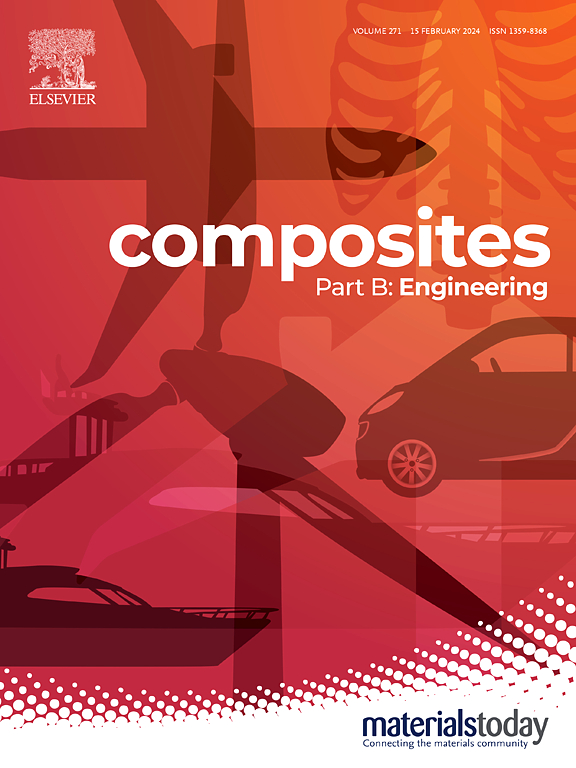Novel metal/biopolymer composite filaments for extrusion-based additive manufacturing using CuSn10 as example
IF 12.7
1区 材料科学
Q1 ENGINEERING, MULTIDISCIPLINARY
引用次数: 0
Abstract
An innovative, broadly applicable metal/biopolymer composite filament with high metal fill ratio of 65 % for additive manufacturing using material extrusion achieving successfully sintered metal parts has been synthesized. Over the past decade, Material Extrusion (MEX) has gained popularity as a method for additive manufacturing of metal parts, particularly for producing green parts, due to its flexibility and cost-effectiveness. Specifically designed feedstocks for MEX process have to be provided to achieve high quality properties of metal parts. However, the development of composite filaments with required high-volume metal and MEX-compatible binder matrices remained limited. In this study, a metal/biopolymer composite filament is developed based on CuSn10 metal powder at 65 vol% combined with two novel binder matrices: the first consisted of the binders polylactic acid (PLA) and acetyl tributyl citrate (ATBC), while the second combined PLA, butenediol vinyl alcohol copolymer (BVOH), and ATBC as plasticizer. The binder components are biocompatible and environmentally sustainable. The green parts were successfully printed through MEX and then processed via thermal debinding and sintering in an open atmosphere. Both the debinding and sintering processes were successful and environmentally friendly. The filaments and the resulting metal parts were thoroughly characterized. The results revealed that the feedstock was extremely brittle without the plasticizer. Increasing the plasticizer content improved flowability but led to poorer surface roughness of the filament. Incorporating BVOH reduced the surface roughness and decrease viscosity. The optimal binder matrices were identified as PLA with 10 vol% ATBC and PLA/BVOH with 5 vol% ATBC. CuSn10 parts produced from these new filaments show significant improvements in the mechanical properties, relative density and porosity. This study is significant for metal production using MEX, with CuSn10 powder as a model, demonstrating an improved metal powder ratio of 65 vol% and exploring novel bio-based binder matrices that could potentially be applied to other metals as well.
以CuSn10为例,用于挤压增材制造的新型金属/生物聚合物复合长丝
合成了一种创新的、广泛适用的金属/生物聚合物复合长丝,其金属填充率高达65%,用于增材制造,利用材料挤压成功烧结金属零件。在过去的十年中,材料挤压(MEX)由于其灵活性和成本效益,作为金属零件增材制造的一种方法,特别是在生产绿色零件方面,已经得到了广泛的应用。必须为MEX工艺提供专门设计的原料,以实现金属零件的高质量性能。然而,需要大量金属和mex相容粘结剂的复合材料长丝的发展仍然有限。在本研究中,以体积为65 %的CuSn10金属粉末为基础,结合两种新型粘结剂基质,制备了一种金属/生物聚合物复合长丝:第一种是由粘结剂聚乳酸(PLA)和柠檬酸乙酰三丁酯(ATBC)组成,第二种是由PLA、丁烯二醇乙烯醇共聚物(BVOH)和ATBC作为增塑剂组成。粘合剂成分具有生物相容性和环境可持续性。通过MEX成功打印绿色部件,然后在开放气氛中进行热脱脂和烧结处理。脱脂和烧结工艺都是成功和环保的。细丝和由此产生的金属部件进行了彻底的表征。结果表明,在不添加增塑剂的情况下,原料非常脆。增塑剂含量的增加提高了长丝的流动性,但导致长丝的表面粗糙度变差。加入BVOH可以降低表面粗糙度,降低粘度。确定最佳粘结剂基质为含10% ATBC的PLA和含5% ATBC的PLA/BVOH。用这些新长丝制备的CuSn10零件在力学性能、相对密度和孔隙率方面都有显著改善。这项研究对于使用MEX生产金属具有重要意义,以CuSn10粉末为模型,证明了金属粉末比提高到65 vol%,并探索了可能应用于其他金属的新型生物基粘合剂基质。
本文章由计算机程序翻译,如有差异,请以英文原文为准。
求助全文
约1分钟内获得全文
求助全文
来源期刊

Composites Part B: Engineering
工程技术-材料科学:复合
CiteScore
24.40
自引率
11.50%
发文量
784
审稿时长
21 days
期刊介绍:
Composites Part B: Engineering is a journal that publishes impactful research of high quality on composite materials. This research is supported by fundamental mechanics and materials science and engineering approaches. The targeted research can cover a wide range of length scales, ranging from nano to micro and meso, and even to the full product and structure level. The journal specifically focuses on engineering applications that involve high performance composites. These applications can range from low volume and high cost to high volume and low cost composite development.
The main goal of the journal is to provide a platform for the prompt publication of original and high quality research. The emphasis is on design, development, modeling, validation, and manufacturing of engineering details and concepts. The journal welcomes both basic research papers and proposals for review articles. Authors are encouraged to address challenges across various application areas. These areas include, but are not limited to, aerospace, automotive, and other surface transportation. The journal also covers energy-related applications, with a focus on renewable energy. Other application areas include infrastructure, off-shore and maritime projects, health care technology, and recreational products.
 求助内容:
求助内容: 应助结果提醒方式:
应助结果提醒方式:


